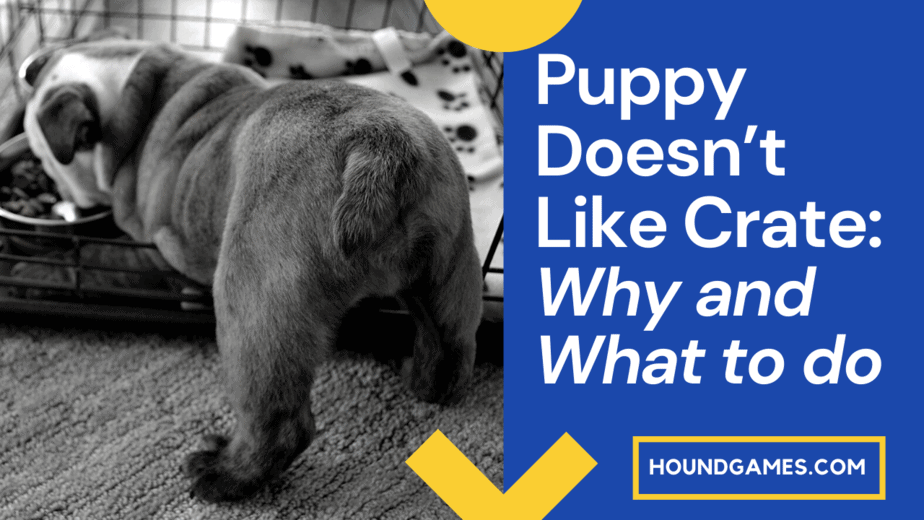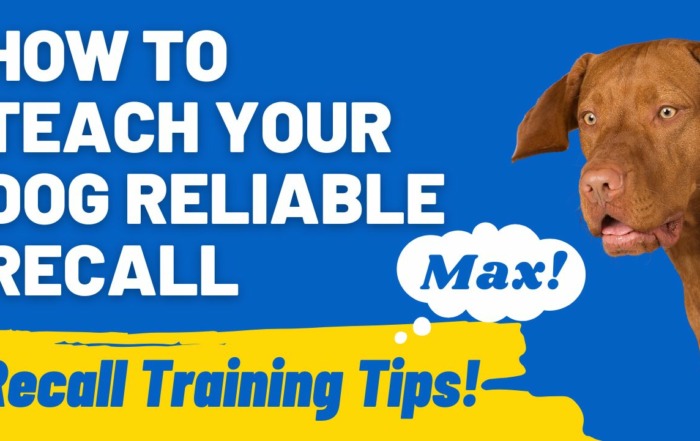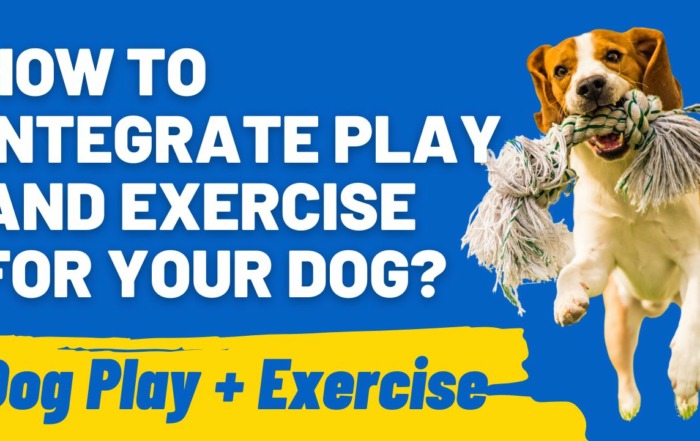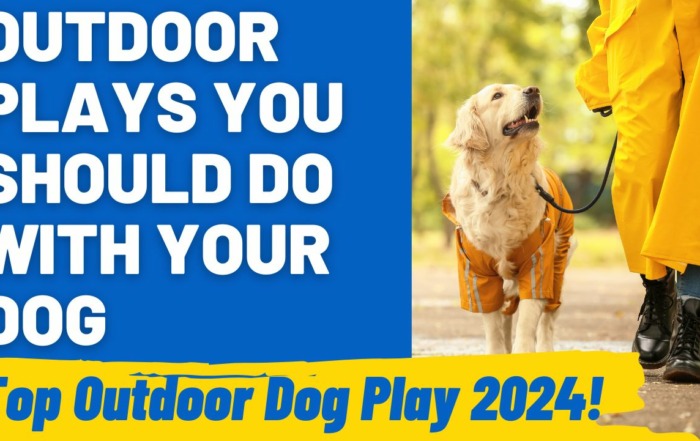Veterinarian Answer
For puppies to like their crate, they must be properly introduced to it. It is critical to note that the crate should never be used as punishment.
Slowly introduce your puppy to the concept of a crate by having the crate in an area your pup spends their time. Encourage your puppy to explore the crate through positive reinforcement. Feeding meals in the crate may also help to form positive correlations.
Ensure that the door is not shut every time your puppy lays in the crate. Additionally, make sure that your dog isn’t only being placed in the crate when you are leaving the house, as this will form a negative association.
Avoid having your puppy locked in the crate for inappropriate periods of time. Having your puppy in the crate over night is appropriate, whereas having your puppy in the crate 12 hours at a time is not.
All over the internet you will find people saying, “Puppies naturally love crates!” or “They are den animals, so they will take right to it!” So if our puppy hates their crate, we wonder what went wrong.
So before we dig in, let’s clarify a few things:
-
Dogs are not den animals. This is marketing propaganda. And even if they were, dens in the wild certainly don’t have doors.
-
Most dogs can learn to love their crate. But it takes time, patience, and training.
Crating can be controversial. But I like to make sure every dog that comes through my home feels comfortable in a crate.
Then if they ever have to be hospitalized, or if they have to travel in a crate, they have already had positive exposure to the crate, making those stressful events a little easier.
How to get your puppy to like their crate
It is key to make an association between the crate and things the puppy loves.
The mistake many people make is only using the crate if they are leaving. Puppies are smart and will soon realize that the crate equals being alone.
Be sure to read our post: How long can you leave your dog home alone.
Once your puppy makes that association, they will resist their crate.
To get your puppy to like their crate again, the steps are the same as for a puppy who has never seen a crate before (as below).
There will likely be more apprehension from a puppy who has decided they don’t like their crate, so you will need to be persistent with your praise. It can also be a good idea to change up the way their crate looks, such as moving location, the toys within, and even the mat.
Changing up the toys can also be helpful, too, and for this we recommend Bark Box, as you’ll get a new box of fun toys every month, and some treats, too!
It’s vital you make positive associations with their crate.
Here is how:
-
Hide some treats in the crate.
-
Sit down near your puppy’s crate, and let your puppy sniff around.
-
If they sniff the crate (even on the outside) say, “yes!” and slip your puppy a treat.
-
If they step in the crate, even if it is just to get the treats inside of it, say “yes” and treat.
-
Do your best to ignore your puppy if they come out of the crate. All attention and treats happen in the crate during the training session.
If your puppy won’t go near their crate, we need to make the exercise easier. This is especially useful for a puppy who no longer likes their crate.
You can start by marking your puppy with a “yes!”, following up with a treat when they look in the direction of the crate.
Watch the short video below to see how the handler is using a clicker to mark a behavior in place of a “yes!”. Whatever marker you use tells the puppy exactly when they have earned a reward, so be consistent.
In addition to the shaping exercise above, you can also feed your puppy in the crate, and throw toys in the crate for them to play with.
You can even surprise your puppy by smearing a little peanut butter in the back of their crate.
Hiding treasures in the crate throughout the day will get your puppy excited to go in to see what they might find throughout the day.
Eventually, you will put this behavior on a verbal cue. When your puppy heads toward the crate for a treasure hunt, use a cue like “crate” and when your puppy puts any feet in the crate, mark them with a “yes!” and follow up with treats.
If your puppy doesn’t like their crate because they don’t have enough room, then be sure to read our post: Puppy Outgrows Their Crate: (Crate too small? When to stop?)
I also want to chime in here and recommend these gorgeous dog blankets, as our dog adores his and I just had to share it with you!
You can get one here if you want one for your dog, too!
Puppy doesn’t like the door closed on crate
Your puppy has to be trained to like the door closed on their crate. So often the door closes and the owner leaves. This is guaranteed to cause a puppy to dislike their crate. The puppy gets frustrated because there is a barrier keeping them from following!
Teaching your puppy to relax when the crate door is closed, is part of the crate training process.
We can build on the crate training program above. Once your pup is going in and out of the crate readily, you will wait until they go in and do the following:
- Close the door.
- Mark with a “Yes!” and slip treats through the crate.
- Immediately open the door.
In many cases, the door closing becomes a cue to your puppy that they are stuck in the crate. So this exercise will change your pup’s perspective. The door closing equals treats!
Then you want to up the ante. Get a bone or stuffable toy that your puppy loves. I prefer a puzzle toy such as a Kong toy that I can smear a little canned dog food or peanut butter in. Put the chew toy in with your puppy and close the door. As your pup chews on the toy, stay nearby at first.
Before your puppy finishes the chew toy, open the door.
As your puppy does well with this exercise you want to practice walking in and out of sight for a brief period of time (literally start with 1 second).
Does your puppy stop chewing when you leave their sight? If they do, I wouldn’t leave them for more than a moment yet.
But I promise that if you keep working on this, they will slowly get more comfortable with you leaving.
You might also like to read our post, Why Does My Dog Bark At Night? (Answered)
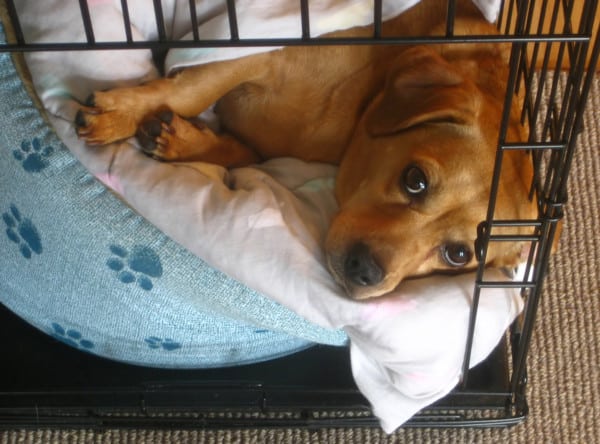
Puppy won’t go in their crate at night
Puppies quickly learn at night that once they go to their crate, the fun is over.
Kind of like kids, they will try to resist! They have a fear of missing out on anything that happens while they are sleeping!
The first thing you can do is make sure you are crating periodically during the day (which includes training sessions that are designed to make positive associations with the crate). This step really helps your puppy feel comfortable going into their crate.
Then you want to make sure your puppy gets a chance to burn energy. Try to prevent napping at least two hours before bed, and keep your puppy playing.
This can be tricky. At night, most puppies are prone to the puppy crazies, or the zoomies. They seem to lose their minds, and they can also turn into four-legged sharks! So we need to find a game that keeps them engaged, and keeps their mouths off of us.
My favorite puppy tool is a flirt pole, or chase toy. This keeps their mouth engaged while keeping some distance.
This can evolve into games that will help teach your puppy impulse control.
Once it is bedtime, your puppy may still seem to have some energy. This can happen when a puppy is overstimulated, or overtired. The best solution here is supplying a safe chew treat that will keep your pup engaged for 10-20 minutes.
Chewing increases serotonin which will help your puppy settle in for the night.
If your puppy is really having a tough time calming down in their crate at night, you can try a pheromone home plug in like Adaptil. While not every dog will respond to the synthetic dog appeasing pheromones, many do, and it sure can’t hurt!
Also be sure to read our post Puppy is Crying at Night.
How long does it take for puppy to like their crate?
If your puppy has not had any previous bad experiences with the crate, they can learn to love their crate pretty quickly.
If your puppy hates their crate already, it may take a little longer to change their perspective.
And if your puppy seemed to be ok in their crate and now suddenly doesn’t like the crate, we likely have to figure out why before we can get them over it.
Many times this will happen if we only use the crate when we leave them. But some puppies will start to resist the crate if something scary has happened… such as if they were in their crate when a thunderstorm hit.
I once worked with a puppy who was only afraid of the crate on Thursdays. When we did some digging we discovered Thursday was garbage day so he associated the sound of the truck and being trapped in the crate. How did he know? He started to react when the family took their trash to the curb!
So in that case we were able to drown out the sound with music and TV (YouTube offers calming videos for dogs).
We also moved his crate so it looked different and made sure he had a long-lasting chew treat on Thursdays to help keep him calm.
Should I ignore puppy whining in the crate?
Yes. Responding to puppy whining tells the puppy that whining will work to get their owner’s attention. It’s easy to accidentally reinforce behaviors such as whining because we feel bad, or we are worried that our puppy has to go potty.
Ideally, with good training, we want to avoid whining altogether. That is the dream, anyway! But when real life happens we have to ignore the puppy.
If you are worried your puppy has to go potty, wait until they are quiet, even if it is just for a second to catch his breath, and take them out.
To prevent whining, I recommend the following:
-
Pick up their water 3 hours before you go to bed. If your puppy still has to pee during the night, it can be picked up sooner. Read our post Should I let My Puppy Drink Water at Night.
-
Set your alarm to take your puppy out every 4 hours. Taking them out before they whine prevents any reinforcement of the whining. As the puppy is successful you can begin to extend the time between alarms.
-
A lot of puppies get frustrated when they see things they can’t get to, so covering their crate can help prevent any stimulation from the world around them.
You may also want to read this: Puppy Pees in Crate: What to do…
A final word
Crates are a wonderful tool to keep our puppies safe if they are used correctly.
Not only do we need to make sure our puppy is trained to love their crate, we need to make sure that we are giving our puppies the mental and physical stimulation they need throughout the day. If they have excess energy brewing, the crate could be miserable for them.
So while I advocate for dogs to spend some downtime in their crates every day, I also recommend that they are able to get out for walks, sniffing play, or games.
Sometimes over-crating can cause our dogs and puppies to dislike them.
So if you have to work long hours, I recommend finding a dog walker or dog daycare to give your puppies some outlets throughout the day. With the right exercise, your puppy will be happy to get back to their crate for a nap and a bone.
Recall Training Secrets: How to Teach Your Dog Reliable Recall
Teaching a dog recall is not just a basic obedience skill; it's a vital aspect of ensuring the safety and freedom of your beloved pet. Picture this: your dog is playfully chasing after a squirrel [...]
The Joy of Petting: How to Approach Dogs the Right Way
"Can I pet that dog?" is often the first thought that pops into our minds when we see a furry friend wagging its tail. The joy of petting a dog is unmatched, offering both the [...]
Puppy Obedience: Where to Begin? An Introductory Guide
Puppy obedience is more than just teaching commands. It's about nurturing a relationship based on mutual respect and understanding. It lays the foundation for a well-behaved adult dog and ensures a harmonious life together. In [...]
Understanding Canine Autism: Do Dogs Experience It?
Have you ever wondered, can dogs have autism? Autism, a complex condition often characterized by social and communication difficulties, is widely recognized in humans. But when it comes to our canine companions, the idea of [...]
How to Integrate Play and Exercise for a Healthier Dog?
Ensuring a healthy and fulfilling life for our dogs involves more than just regular feedings and routine check-ups. Integrating play and exercise into their daily lives plays a crucial role in maintaining their physical and [...]
Outdoor Adventures: How to Make the Most of Outdoor Play with Your Dog?
Engaging in outdoor play with your dog is more than just a fun way to pass the time; it's an essential part of their health and happiness. From frolicking in the local park to embarking [...]

